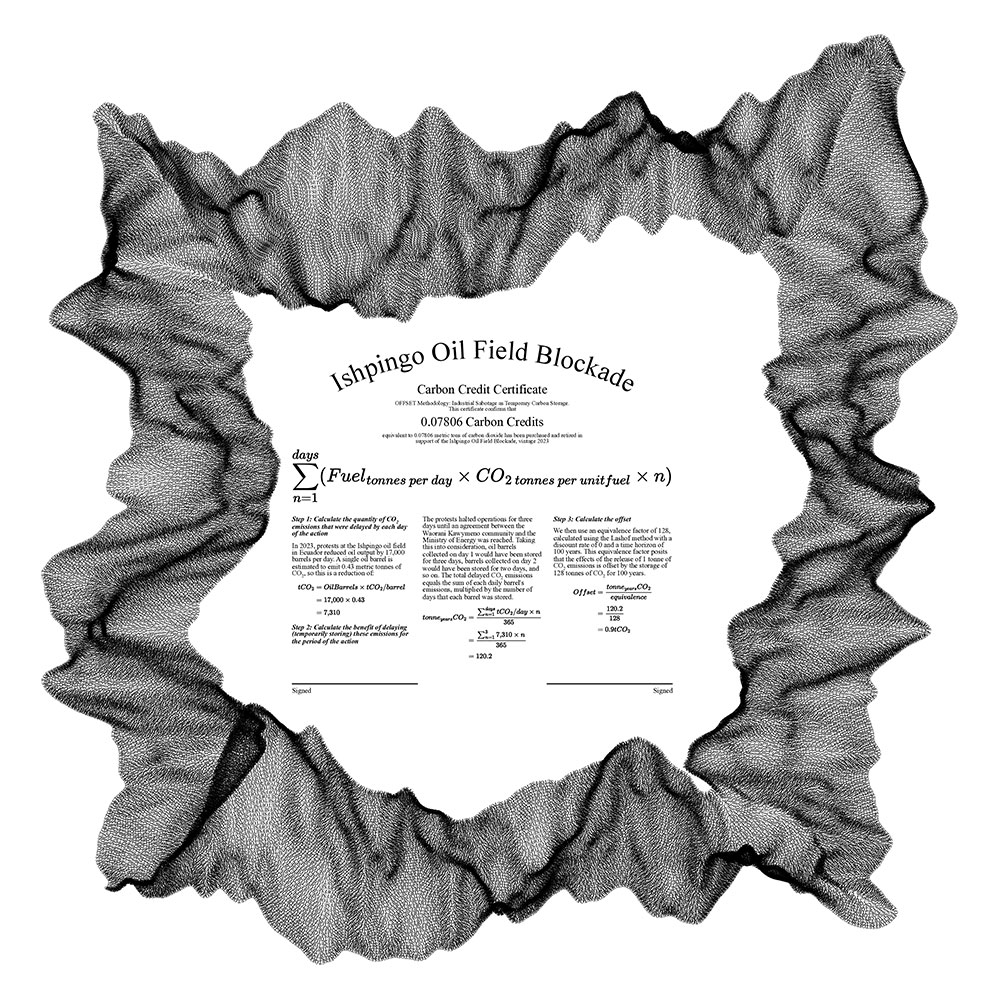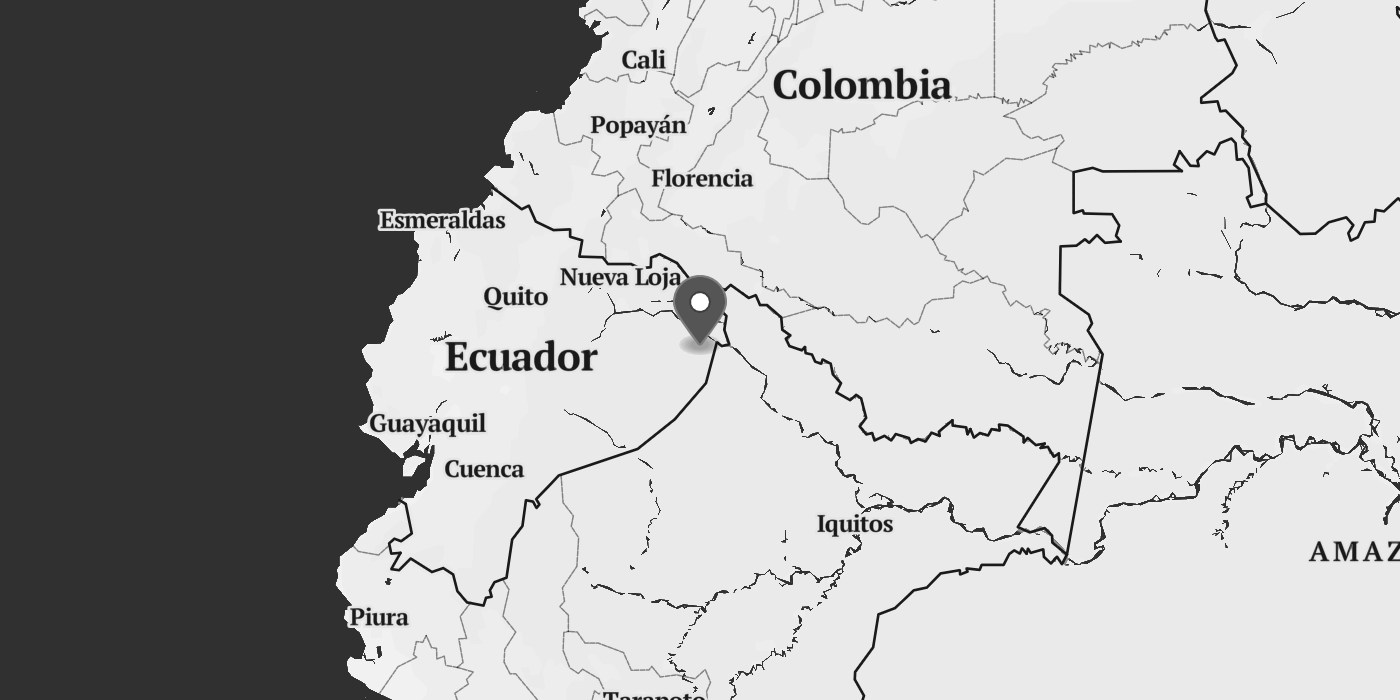Ishpingo Oil Field Blockade
 $200 carbon credit certificate retiring 0.07806 tons of CO2
$200 carbon credit certificate retiring 0.07806 tons of CO2

Methodology
Step 1: Calculate the quantity of CO2 emissions that were delayed by each day of the action
In 2023, protests at the Ishpingo oil field in Ecuador reduced oil output by 17,000 barrels per day 1 2. A single oil barrel is estimated to emit 0.43 metric tonnes of CO23, so this is a reduction of:
Step 2: Calculate the benefit of delaying (temporarily storing) these emissions for the period of the action
The protests halted operations for three days until an agreement between the Waorani Kawymeno community and the Ministry of Energy was reached 1. Taking this into consideration, oil barrels collected on day 1 would have been stored for three days, barrels collected on day 2 would have been stored for two days, and so on. The total delayed CO2 emissions equals the sum of each daily barrel's emissions, multiplied by the number of days that each barrel was stored.
Step 3: Calculate the offset
We then use an equivalence factor of 128 which was calculated using the Lashof method with a discount rate of 0 and a time horizon of 100 years 4 5. This equivalence factor posits that the effects of the release of 1 tonne of CO2 emissions is offset by the storage of 128 tonnes of CO2 for 100 years.
-
https://www.reuters.com/business/energy/ecuador-indigenous-group-reach-deal-end-oil-field-blockade-2023-12-31/ ↩↩
-
https://www.reuters.com/business/energy/petroecuador-declares-force-majeure-over-indigenous-protests-2023-12-29/ ↩
-
https://www.epa.gov/energy/greenhouse-gases-equivalencies-calculator-calculations-and-references ↩
-
Chay et. al. calculate this equivalence factor using Lashof here: https://carbonplan.org/research/ton-year-explainer ↩
-
Fearnside et. al. (2000) Accounting for time in mitigating global warming through land-use change and forestry. Mitigation and adaptation strategies for global change ↩
-
https://www.taipeitimes.com/News/biz/archives/2023/07/02/2003802497 ↩